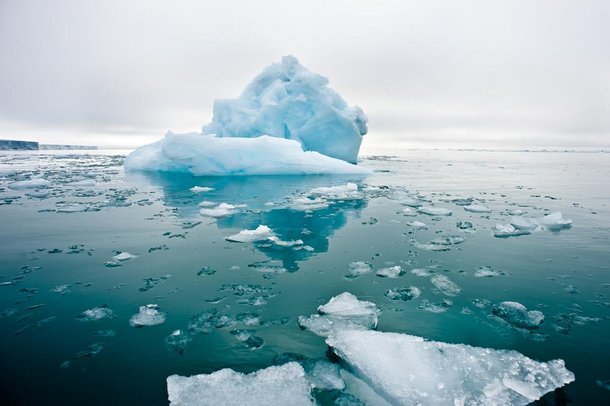No penúltimo fim de semana de janeiro de 2023, um iceberg quase do tamanho da Grande Londres se desprendeu da sua plataforma de gelo Blunt, localizada na Antártida, segundo informações divulgadas pela British Antarctic Survey. As primeiras rachaduras no bloco de gelo foram descobertas há uma década, mas duas quebras mais significativas ocorreram nos últimos dois anos.
Com mais de 1,5 mil km², os pesquisadores não esperavam que o iceberg fosse se desprender e garantiram que o evento não é resultado de mudanças climáticas no planeta. Então, o que realmente causa o descolamento desses enormes blocos de gelo e o que isso muda na região? Entenda todos os motivos nos próximos parágrafos!
Efeito dos icebergs no mar

Embora o caso de 2023 seja bastante chamativo, essa não é a primeira nem será a última vez que um iceberg se descola de uma geleira. Em 2021, por exemplo, uma peça de gelo de 105 km de comprimento e 25 km de largura foi detectada flutuando livremente no Mar de Weddell, uma grande baía no oeste da Antártida.
Esse iceberg possui 4,3 mil km² e é considerado o maior do mundo, batizado de A-76. Entretanto, como a plataforma de gelo da qual este iceberg se desprendeu já estava flutuando na água há algum tempo, o evento não chegou a afetar diretamente os níveis do mar naquela região. Mesmo assim, é preciso ressaltar que plataformas como essa ajudam a diminuir o fluxo de geleiras e correntes de gelo para o mar.
Indiretamente, a perda de partes de uma plataforma de gelo eventualmente contribui para a elevação dos mares, segundo a National Snow And Ice Data Center (NSIDC). De acordo o NSIDC, a Antártida contém água congelada suficiente para elevar o nível global do mar em 60 metros — o que afundaria várias partes do nosso planeta.
Surgimento dos icebergs
 (Fonte: Shutterstock)
(Fonte: Shutterstock)
Como citado anteriormente, a maioria dos pesquisadores tem em mente que a mudança climática induzida pelo homem não foi responsável pelo surgimento do novo iceberg agora em janeiro. Inclusive, o surgimento de novos icebergs é normalmente visto como parte de um ciclo natural das plataformas de gelo que não geraram nada grande por décadas.
Enquanto os cientistas enxergam como importante monitorar a frequência de todos os desprendimentos de icebergs, tudo o que está acontecendo agora é visto como um movimento bem esperado. Por mais que a quebra de agora não esteja ligada às mudanças climáticas, isso não significa que o evento seja uma regra.
Ao o que as temperaturas no mundo têm aumentado, a Antártida vem perdendo massa de gelo a uma taxa média de 150 bilhões de toneladas por ano. A Groenlândia, sendo uma das regiões mais afetadas, está derretendo cerca de 280 bilhões de toneladas por ano.
A água derretida desses lençóis é responsável por cerca de um terço do aumento médio global do nível do mar desde 1993. Sendo assim, a melhor forma conhecida para mitigar esse desastre natural é a continuidade dos investimentos em energias limpas, descarbonização das indústrias e limitar o aquecimento global.